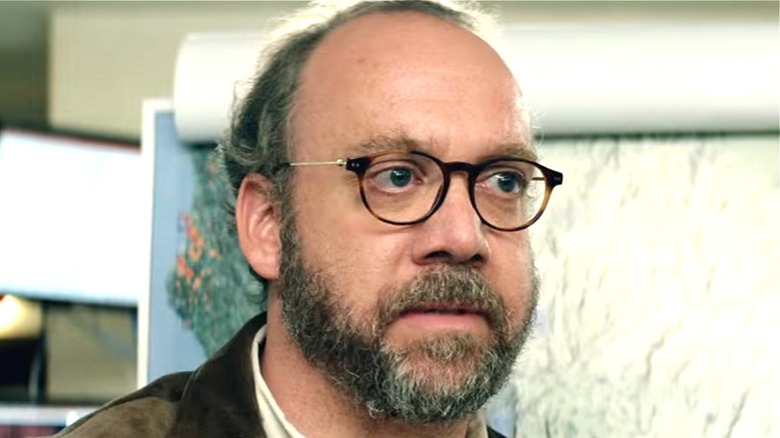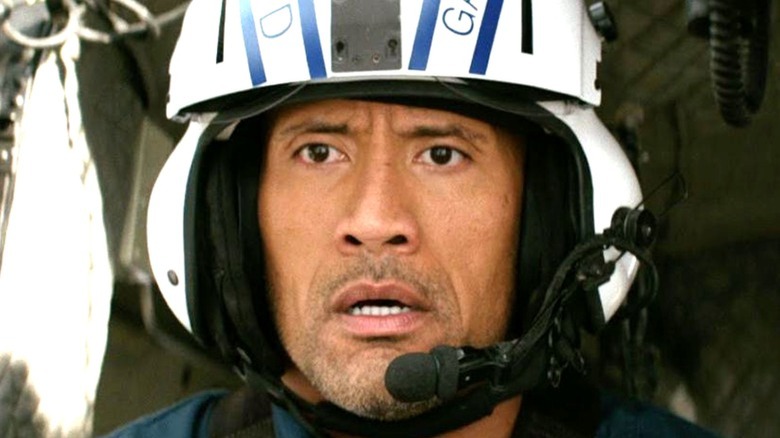Is The Science In San Andreas Accurate?
Throughout his big-screen career, Dwayne Johnson has tested the laws of science in plenty of movies. That "Skyscraper" poster had fans wondering if he really could make the jump (via Men's Journal), and "The Fate of the Furious" led viewers to question if he could change the trajectory of a torpedo with his own hand. Time and again, we've been taught the valuable lesson that this is the Rock's world — we're just living in it. One film that led the towering action star to shake scientific things up a bit is the natural disaster movie "San Andreas."
Directed by one of Johnson's regular go-to filmmaking friends, Brad Peyton ("Journey 2: The Mysterious Island," "Rampage"), "San Andreas" sees Johnson as Raymond Gaines, a Los Angeles helicopter rescue pilot who is called to task when the San Andreas Fault sparks a devastating earthquake that spreads from Los Angeles to San Fransisco. While buildings collapse and iconic landmarks get rattled by the cinematic destruction, our hero desperately tries to outmaneuver it all and save his family in the process.
As thrilling as seeing the Rock go up against Mother Nature in this CGI fest is, though, it begs the question of just how much solid ground "San Andreas" has to stand on in terms of actual science. Well, while there is some accuracy among the action, there are some moments in "San Andreas" that seem to cross the border to just outside of reality, even if those involved may argue the case.
Scientific advice was given but not used for San Andreas
According to Collider, Caltech and USC seismologists and earthquake scientists were consulted for "San Andreas" and came to the conclusion that "this could happen." With that said, it turns out at least one scientist argued against that being the case.
Speaking to the Los Angeles Times in 2015, USC professor and then director of the Southern California Earthquake Center Thomas Jordan revealed that he was called in to advise, but little of his input made it on-screen. "I gave them free advice, some of which they took ... but much of which they didn't" explained Jordan, who confirmed that one of the film's most notable sequences, which sees Raymond on a speedboat outrunning a tsunami, is inaccurate. "Magnitude 9's are too big for the San Andreas, and it can't produce a big tsunami."
Nevertheless, Jordan admitted that it was still a fun film: "It's a good action flick and spectacular special effects ... but not realistic from a seismological point of view." Hopefully, if "San Andreas 2" ever comes around, a more intense study session will be considered, or not at all.

